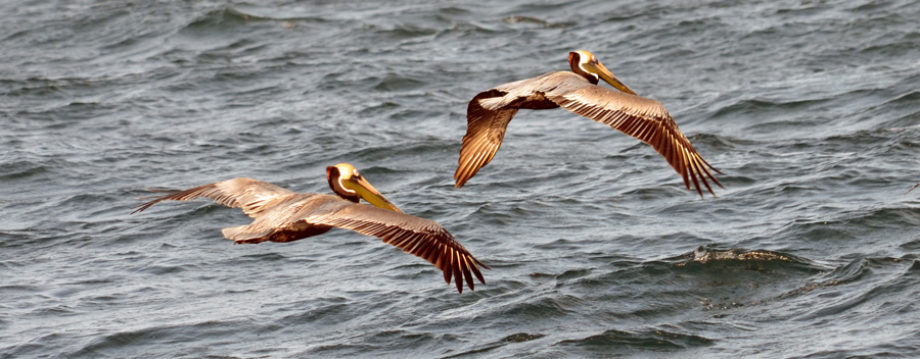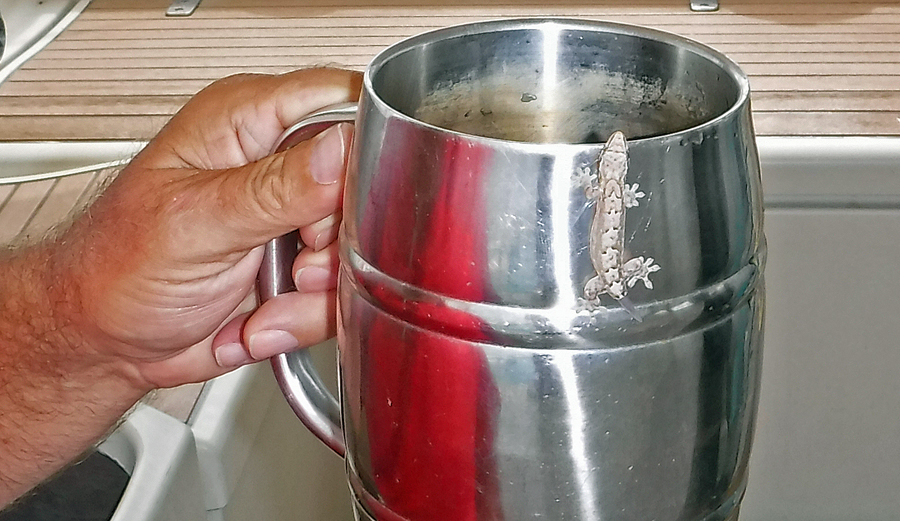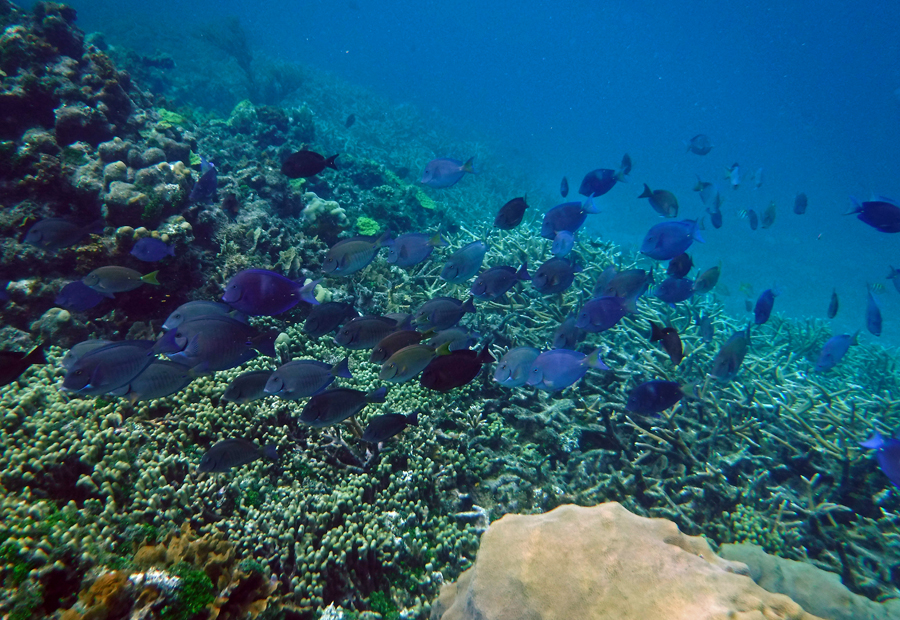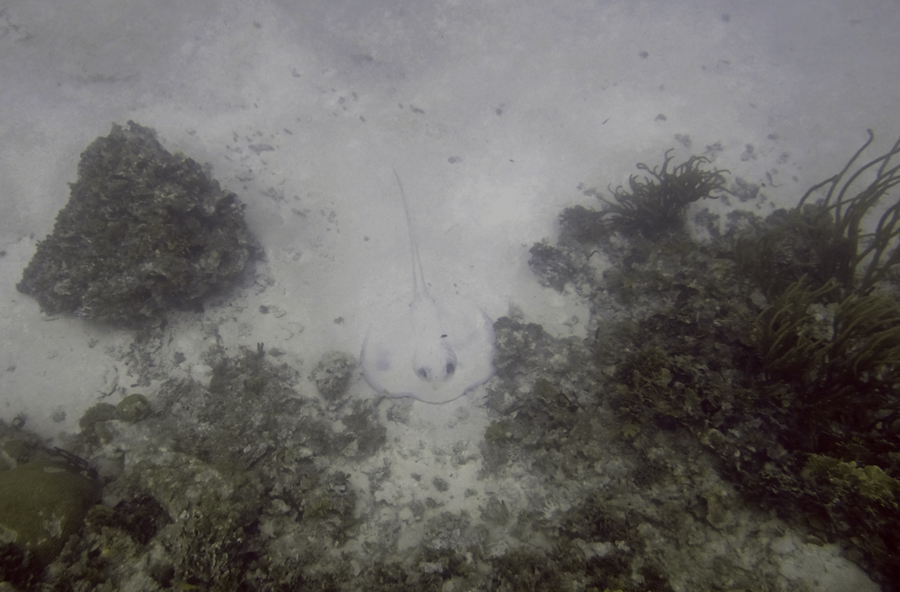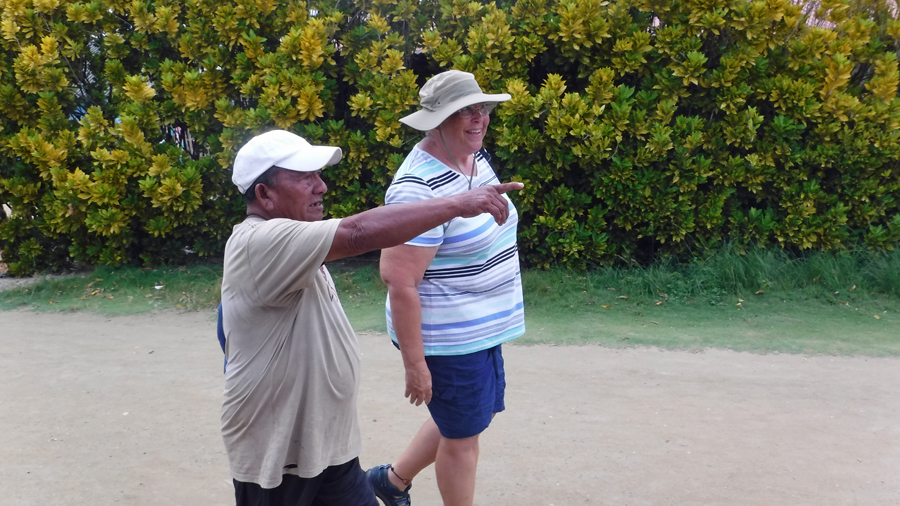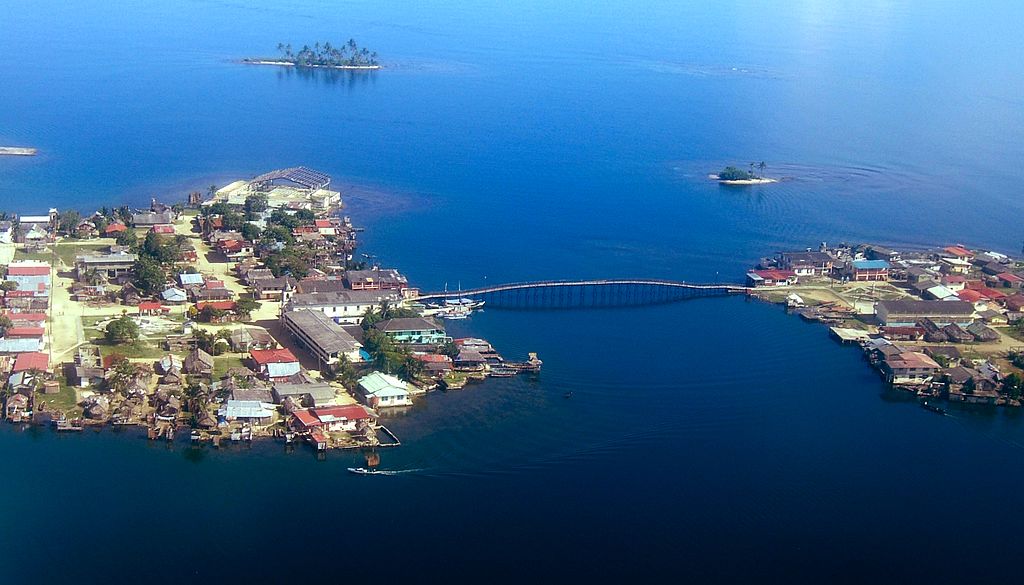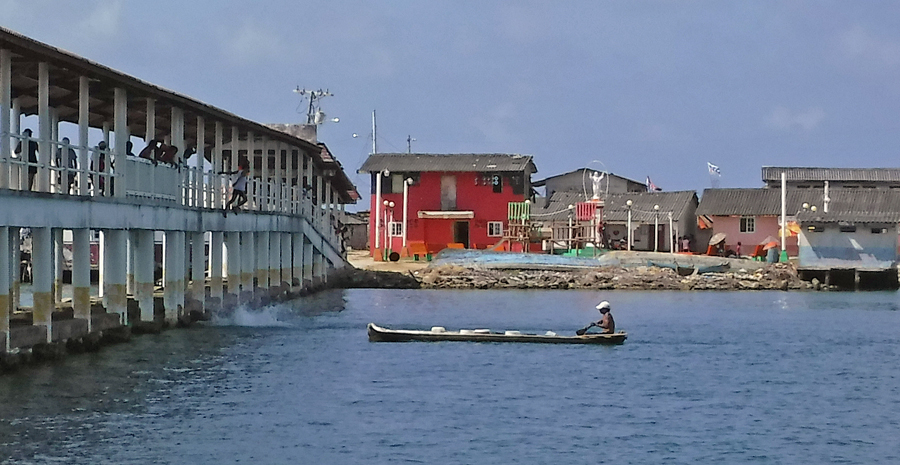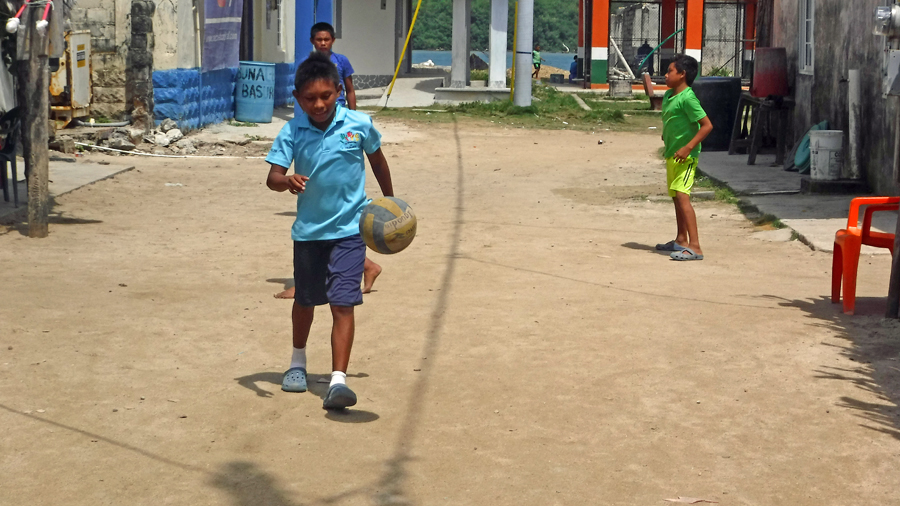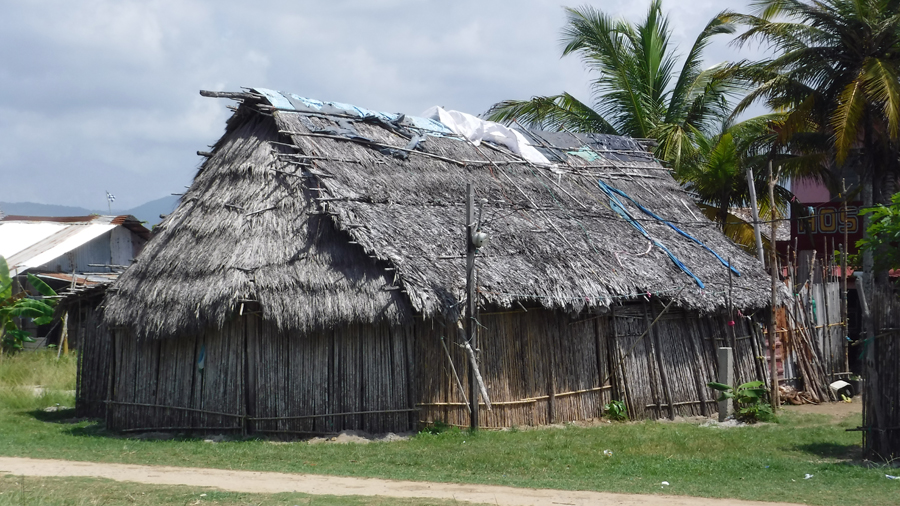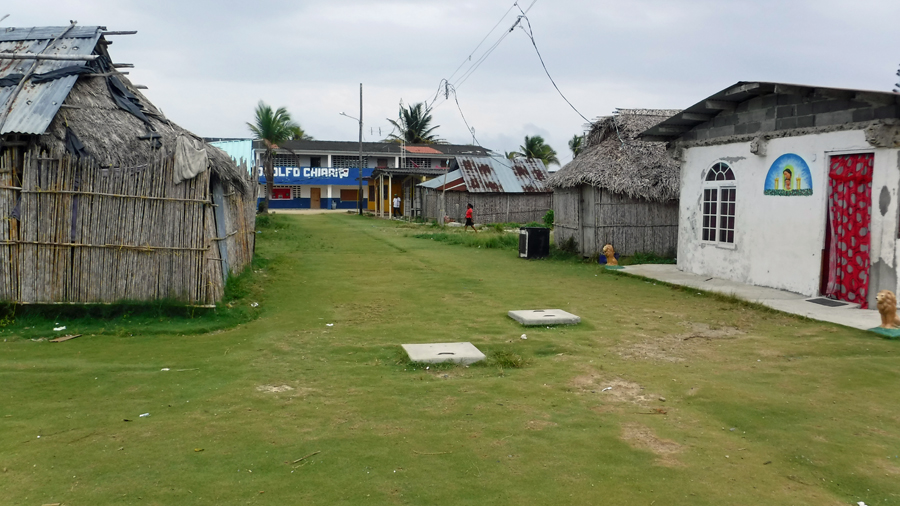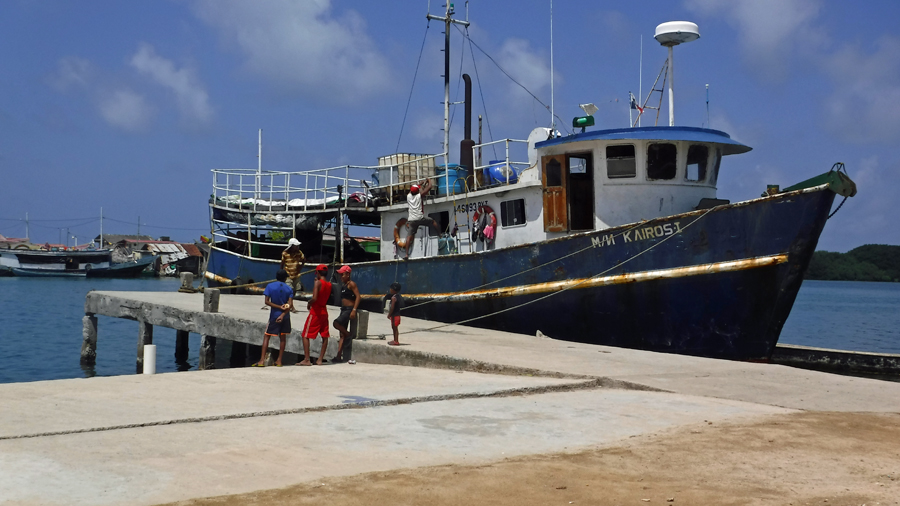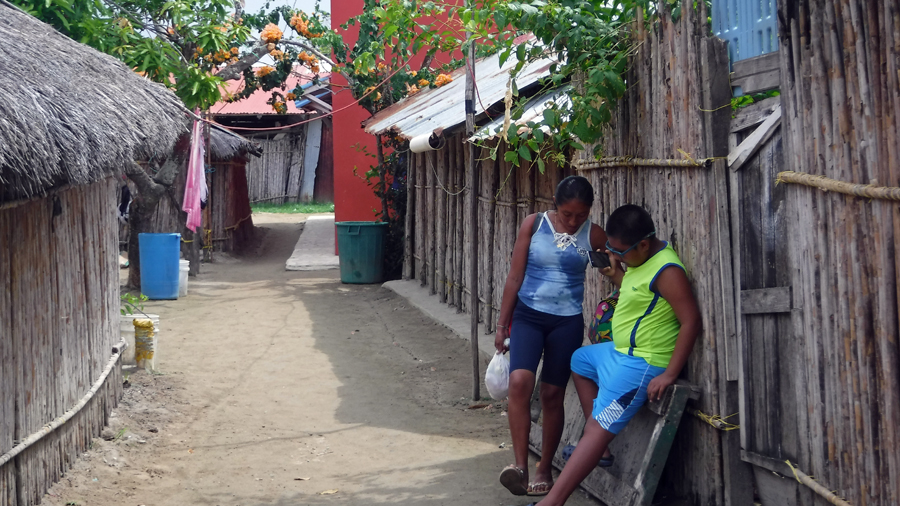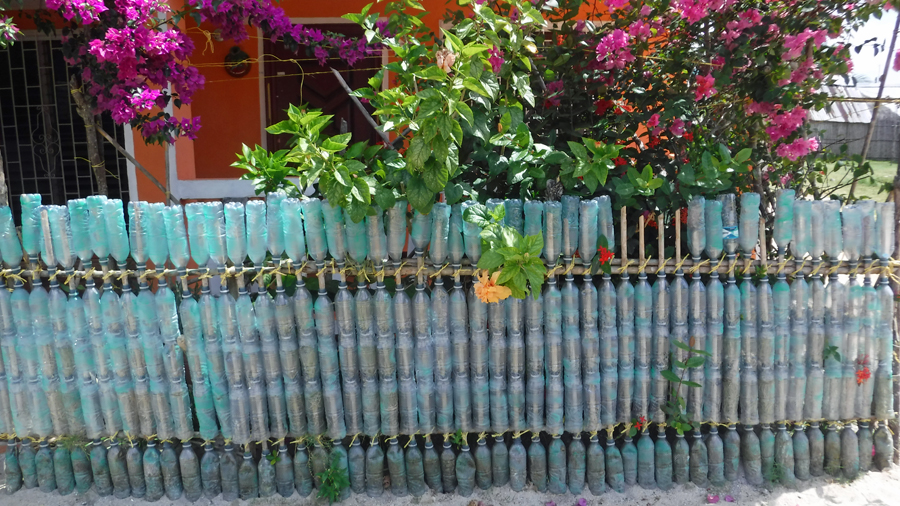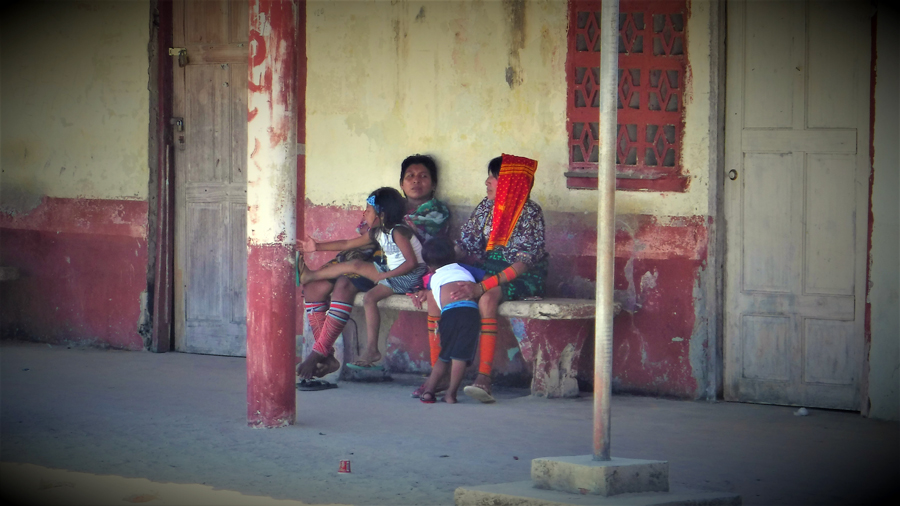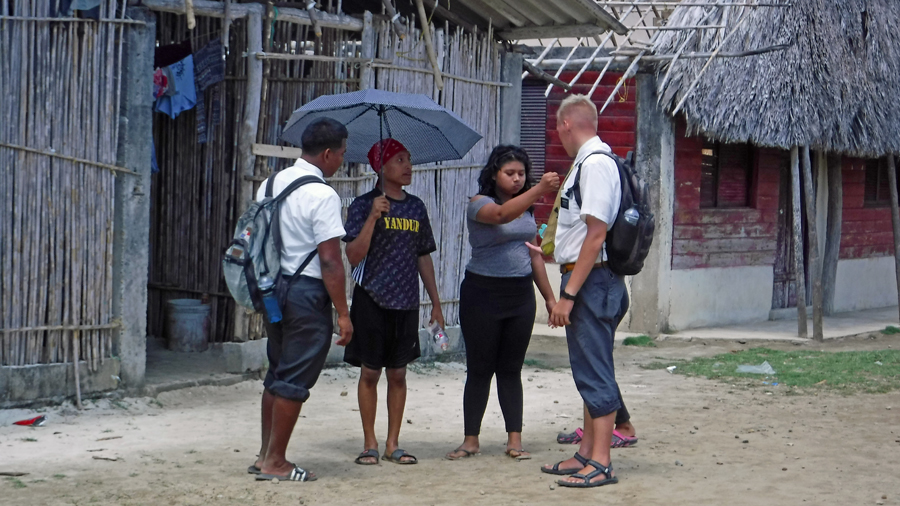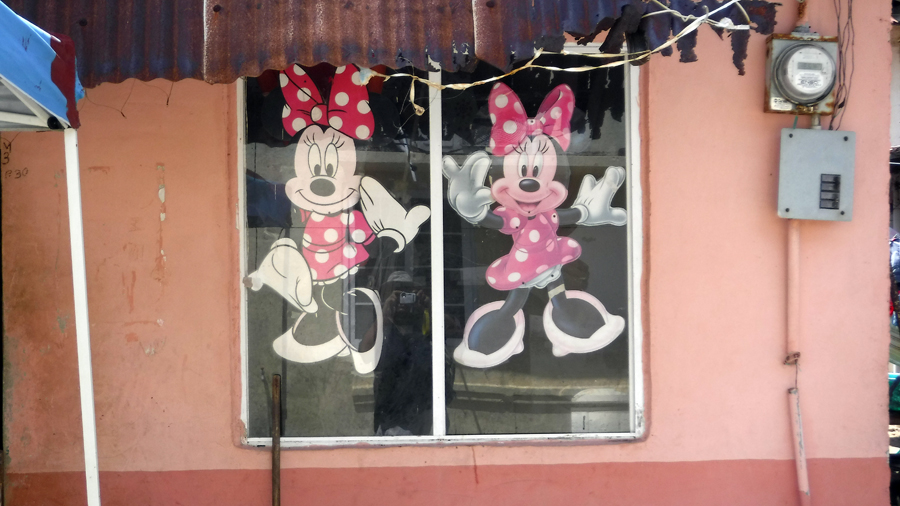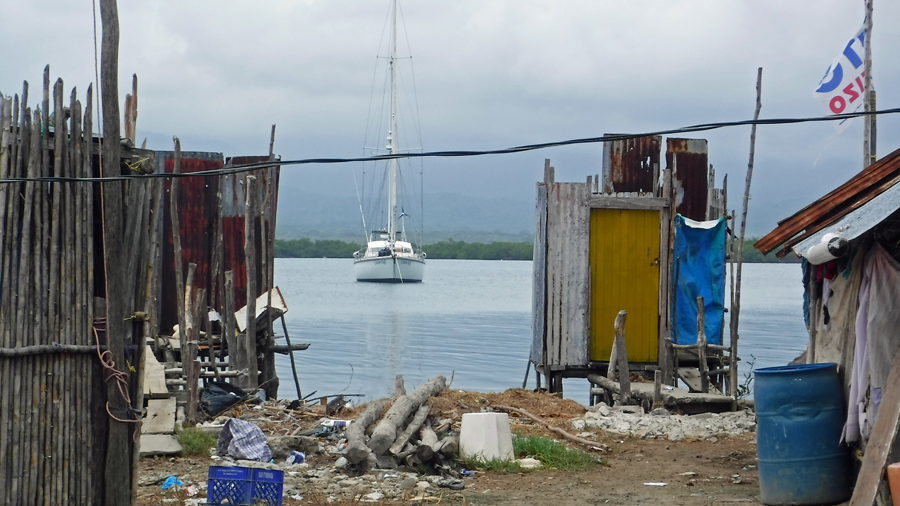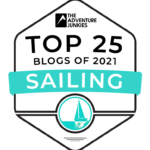We went to Sin City. I’ll explain in a little bit. We have been having an absolutely awesome time in the Coco Banderas Cays. Our ear infections cleared up and we spent about 5 days snorkeling in the area. Lucky for us, we discovered one of the best snorkel spots since Bonaire (9°30’35.2″N 78°36’50.9″W). Water clarity, the abundance of marine life and live coral is what makes the spot so special. Here a couple of pictures snapped:
One thing we both noticed was the lack of underwater trash when swimming In the San Blas. Even the most pristine diving locations in the world such as Bonaire had trash in the water. On one particular day in Bonaire we had to quit because it appeared a ship had dumped shredded trash into the water and it was everywhere. It could have drifted for hundreds of miles before reaching Bonaire. Fine particles of plastic trash were so dense it felt unhealthy to be in it. The waters cleared the next day. It also wasn’t unusual to see the occasional car tire in the heart of a prime diving spot. Not here. Kuna people do not have cars. Rarely have we encountered trash on the reef surrounding these remote islands.
Snacking on fresh cold pineapple and trying to stay out of the hot sun, today we took a break from being in the water and I listened to music. When was the last time you spent a day listening to music? I mean really listening and not just having the iPod in the ears while cutting the grass or driving a car on the way to or from work. I mean sitting back, sipping something cold and listening with both ears wide open. I have always loved music and have amassed a little over 150,000 songs. The genres are all over the place and one of my favorite things to do is shuffle everything. It is like an audio slot machine, you never know what is going to come up next. I love it when a favorite song plays that I haven’t heard for a long time. This is the harmonious icing on the cake.
Trash is an ongoing issue when we are in the boondocks like this. Burning it on the beach is one option and paying for a Kuna to haul it off is another. On the morning net, one of the Debbie Downers was saying not to give trash to the Kuna since they might drop it in the water pocketing whatever money was paid for the disposal. She didn’t know this was happening for a fact but clearly felt the urge to warn everyone on the off chance her information was good. On the bow of Cream Puff sits two large bags of trash. It is double bagged and airtight so not to attract bugs or stink. Thinking about moving again, we decided to make a pit stop at Nargana Yandup Island. Our guide book tells us we can responsibly dispose our trash there. On this island the Kuna people have strayed from their customs and culture. In fact, from where we sit right now we can see the mountains of Panama and at night the only lights are from Nargana Yandup Island. They have adopted electricity. This is not all they have adopted, they have cell service and internet. They have strayed from the Kuna traditions and have become influenced by the evils of western world civilization, dubbed by Cindy as Sin City!
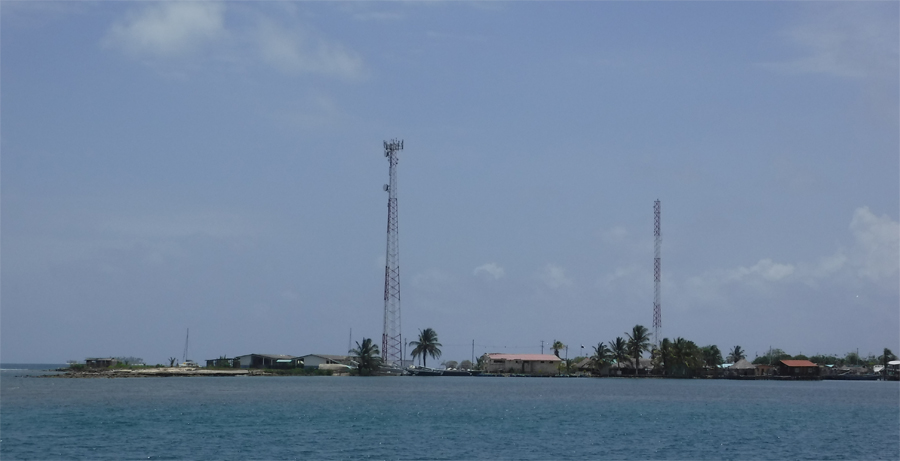
Approaching the island we see the cell tower we have been trying so hard to reach for our internet (when it is working)
While in Sin City, we thought it would be a good idea to buy some bread and veggies. It has been a while since we bumped into the veggie boat and our fresh stuff is dwindling. Our guidebook tells us several small stores are located on the island. Upon landing, I do not see how it is possible for the small island to support “several small stores”, this soon becomes clear.
I am going to complain about the heat, again. The wind has died and none is forecasted for the next few days. It is hot. Sleeping at night is now a challenge. Fans run on Cream Puff twenty-four hours a day. Being located just 1,000 km (600 miles) north of the equator is like living inside an oven. The sun is closer to the earth here and the heat from the sun is absolutely brutal. Relief can be found in the shade where it is only 35°C (95°F). The wind helps when it blows, but alas. The Kuna don’t seem bothered by heat. I guess if you are born here you are used to it. Noticing some people on the island wearing long pants and a few Kuna wearing blue jeans, I think to myself I would die if I had to wear jeans.
Frederico is the Chief of Nargana Yandup Island. He is a short fellow with few teeth and just celebrated his 69th birthday. Our guidebook told us to look him up and gave directions to his house. Outside of his home is a sign, “Frederico family welcomes all to Nargana Yandup”. Landing our dinghy at the town dock we immediately were welcomed by the chief. His English was good and he says he learned all of his English words from visiting Yachties. He wanted us to teach him a few new words, jotting them down in his notebook. He told us from his house he watched us leave Cream Puff in the dinghy and came down to the dock to greet us. Offering a tour of the island he asked us what we’d like to buy.
Nothing is free with the Kuna people. Any service or ware is in trade or for money. Panama’s currency is the US dollar. When the chief offers a tour of the island, he is expecting a donation. Frederico collects money for a charity helping the Kuna people unable to support themselves. Whatever we would like to donate is fine with him and will be gracefully accepted with a smile and warm thanks. Asking about our trash (still on the Puffster) he assures us we can leave it on his dock for proper disposal. He shows us where he lives.
So, what is Sin City like? The island is small. It is possible to walk across the entire island in 10 minutes, even walking very slowing as Chief Frederico walks. Another island, Isla Corazón de Jesús (Heart of Jesus) is joined by a large steel bridge. This island is even smaller. Noticing a lot of people hanging about on the bridge, we wondered why. Crossing the bridge we discovered the answer. The bridge is shaded and the light wind provides a cooling breeze. Kids are the same everywhere in the world. They use the bridge as a platform to jump off into the cool water below. They scale the structure’s supports back up to the walking level and jump off again. Other than the one air conditioned building on the islands, this is the coolest place. Yes, the community clinic is air conditioned. This is the largest structure on the island and has window AC units. They also have a backup generator and serve as a medical center for all the surrounding islands. The Kuna are proud of the clinic.
There are no cars, bicycles or golf carts. Since nothing is more than a ten minute walk away they don’t need them. Streets are a mix of grass and sand. Some of the homes are concrete, most are the traditional Kuna palm thatch with sand floors. Very few homes have glass windows. There is no glass sold on the island. The closest hardware store is about 100 kilometers away (65 miles) as the crow flies. However, a trip to the hardware store would be an adventure since there are few roads on mainland Panama in the Guna Yala region and transportation by boat is required for all supplies to the coastal towns and island. Windows are often covered in fabric or thatch. The roof extends enough to keep the rain out during the wet season. There are no street signs or numbers on the houses. Everyone knows where everyone else lives. Most homes have no doors. They don’t need them since there is no crime. Walking down the street the contrast of building materials is apparent. Homes seem to be built with whatever was available at the time or what the owner could afford to have transported onto the island. We notice small wood homes with thatch roofs next to concrete homes complete with doors and glass windows. The island is a hodgepodge of Kuna architecture.
Frederico walked up to what we thought was a home and went to an open window on the side. This is where the bread is sold. Our next stop is to get some vegetables. He takes us to another house. We buy vegetables in what appears to be someone’s living room. Every stop he helps us with the transaction and ensures we are charged the correct price. Now we understand why the book said there are several shops on the island. It is because each person only sells a few things, with one exception. Every store on the island sells Pork and Beans. Some even had more than one brand and size. I am guessing the Kuna in Sin City love a hot heaping helping of Pork and Beans with their internet, cell phones and electricity.
Televisions are on everywhere even though it is the middle of the day. They have also discovered satellite television. We stick out like sore thumbs. We are the tallest whitest people on the island. As we shop in the stores we hear people chatting about the Americanos on the island. This is until we meet two young Mormon elders doing their missionary work on Nargana Yandup. One of them is from Arizona, USA and says the heat here is hotter. He says this while wearing the collared shirt and tie required by his church. We agree. It is darn hot! We chat with them for a while. They are just about done with their two year assignment and are seriously looking forward to returning home. A twinkle in the eye is detectable as they talk of home. They offer to help us shop but see we are in good hands with the chief. During their time on the island, they have learned Spanish and Kuna. No doubt they’ve enjoyed the occasional can of Pork and Beans with the Kuna community.
I am about to write something a little bit negative and gross. Before I do, I want to emphasis the Kuna people are truly wonderful. If we say hello, they light up and do the same. On one of the local islands a cruiser lost his dinghy and outboard motor one night as he failed to tie it securely to his boat. It was found floating miles away the next morning by two Kuna fishermen. Knowing the waters, wind and currents the Kuna had a pretty good idea from where the dinghy had floated. They probably also had an understanding of the value of the boat to the owner since without a dinghy and no place to buy a replacement, the cruising days in these waters are finished. Towing it behind their sailing ulu an effort was made to return it. Miraculously the fishermen found the owner and he rewarded them handsomely for their troubles. The Kuna people are warm and caring. Even with our language barrier, we are able to laugh with them playing Charades to communicate. Our time here is amazing and we’re both so happy for this experience.
It is a shame about the amount of trash on Nargana Yandup. Walking with Frederico we noticed windblown trash against the sides of most homes, in the alleyways and in the tall shrubs. The island is not big. All the trash could be picked up by the residents in less than a morning but it didn’t seem to bother them. They are busy being fascinated with TV and internet. Several times Frederico stepped over a can or plastic bottle as he showed us about. Now comes the really gross part. Few homes have sewer systems. Most do not have running water. We observed women carrying buckets of water from a community well to their homes. Buckets of sewage are dumped straight into the surrounding waters. If you look closely at some piers or docks behind the houses on the water’s edge, you will see a small outhouse built onto the end. The outhouse uses the direct deposit method into the surrounding waters. This was verified by Cindy when we arrived and she pointed to a turd floating past our boat just after we anchored. We didn’t stay long.
